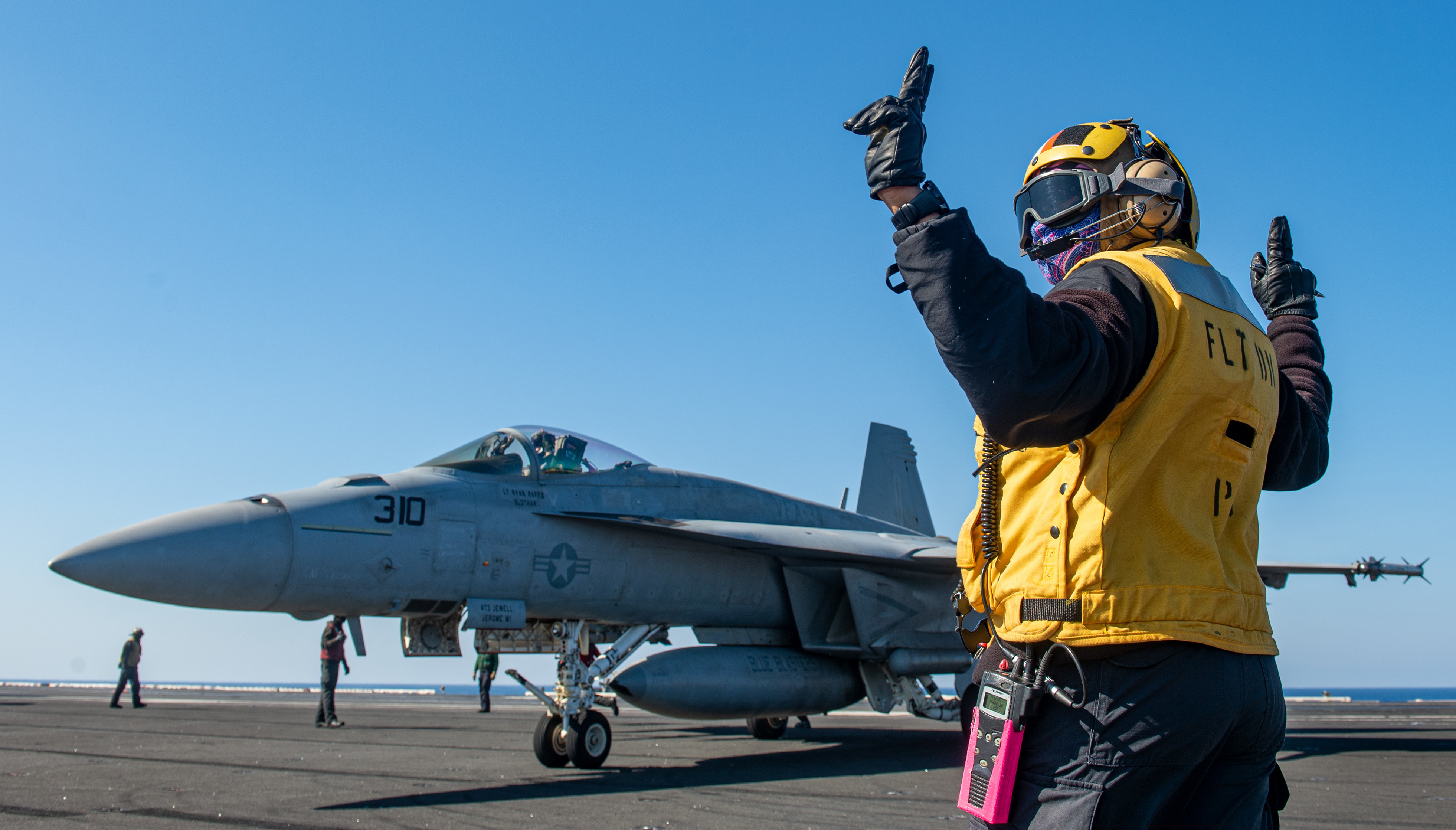
The F/A-18E Super Hornet blown off the deck of an aircraft carrier was recovered 9,500 feet under the Mediterranean Sea, U.S. 6th Fleet announced on Monday.
The single-seat Super Hornet assigned to Carrier Air Wing 1 aboard USS Harry S. Truman (CVN-75) was knocked off the deck of the carrier in what the Navy at the time called “unexpected heavy weather” during the midst of an underway replenishment.
A “team from Task Force (CTF) 68, Naval Sea Systems Command’s Supervisor of Salvage and Diving (SUPSALV), Harry S. Truman, Naval Strike Fighter Wing Atlantic, and U.S. 6th Fleet embarked on the multi-purpose construction vessel MPV Everest,” oversaw the Aug. 3 recovery, according to the statement from 6th Fleet.
“The aircraft was recovered using a CURV-21 remotely operated vehicle to attach specialized rigging and lift lines to the aircraft. A lifting hook was attached to the rigging to raise the aircraft to the surface and hoist it aboard Everest.”
The recovery team included members from Phoenix International, the maritime salvage company that aided in the recovery of an F-35C Lightning II Joint Strike Fighter from the Pacific following a January crash aboard USS Carl Vinson (CVN-70). A similar team, including Navy salvage personnel, recovered the fighter from a depth of 12,500 feet using a CURV-21.
The Navy took the recovered Super Hornet to an unspecified military base in Europe and will eventually transport the jet to the U.S. While 6th Fleet did not provide details, Everest docked in Sicily, near Naval Air Station Sigonella, the day after the recovery in Augusta, according to ship tracking data.
The incident is still under investigation. The service has yet to identify the squadron to which the Super Hornet belonged.
Truman deployed from the East Coast in December and since then has been operating almost exclusively in the Mediterranean Sea. In a visit earlier this year, officials aboard Truman told USNI News the air wing was flying 60 to 90 sorties a day as part of ongoing deterrence missions along NATO’s eastern front.





